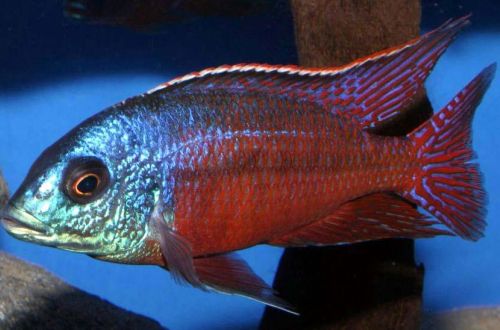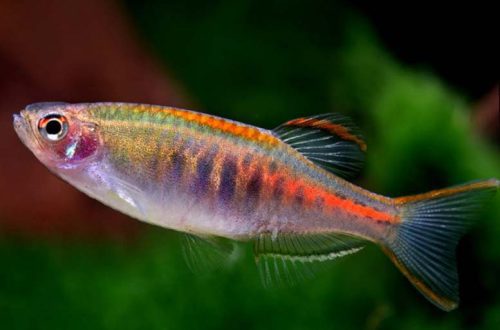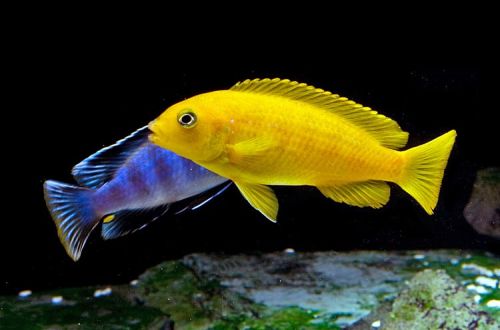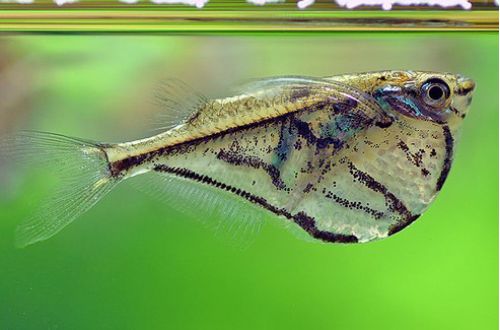
Protomelas
Protomelas or Red Empress Cichlid, scientific name Protomelas taeniolatus (formerly Haplochromis taeniolatus), belongs to the Cichlidae family. It has a rich bright coloration of predominantly fiery red orange with a beautiful ornament on the fins. Such a colorful appearance, coupled with the ease of maintenance and breeding, make this species one of the most popular among African cichlids.

The fish is supplied under different names, among them Protomelas boadzulu, Protomelas ribbon, etc. are famous. In addition, there are several artificially bred forms that also have their own names, for example, “Super Red Empress”, which is distinguished by a brighter color.
Requirements and conditions:
- The volume of the aquarium – from 280 liters.
- Temperature – 23-28°C
- Value pH — 7.6–8.8
- Water hardness – medium and hard (10–25 dH)
- Substrate type – sand with rocks
- Lighting – moderate
- Brackish water – allowed at a concentration of 1,0002
- Water Movement – Low/Moderate
- Size – 13–15 cm.
- Nutrition – a combination of vegetable and meat food
- Life expectancy – up to 10 years.
Habitat
An endemic species found exclusively in Lake Malawi on the African continent. They live everywhere throughout the lake, keeping to the coastal part with a rocky shore interspersed with a sandy bottom. In their natural environment, they feed on algae growing on rocks and small zooplankton.
Description

The body shape is characteristic of most species of cichlids. Males are more colorful than females. Their body is painted in a bright orange-red color, the head is a blue tint. The fins are ornamented with red and bluish veins and dots, the pattern may differ within the species, as there are several color forms found in different regions of the lake. Females and juveniles are noticeably paler, being mostly silver in color, sometimes tinged with orange laterally.
Food
Protomelas accepts all types of dry, live and frozen foods. The main condition is that the diet should be varied with the mandatory inclusion of herbal supplements. The optimal composition is as follows: spirulina flakes mixed with flakes and / or granules containing protein components, or live food in the form of bloodworms, mosquito larvae. On sale there are specialized feeds for African cichlids, combining all the necessary elements. Feed 2-3 times a day in an amount that will be eaten within 5 minutes.
Maintenance and care
The success of the content is largely determined by the size of the tank, the least hassle will bring an aquarium of 300 or more liters for 3-4 fish. The design uses a sandy substrate with several flat stones scattered randomly along the bottom. A heap of rocks with vertical stones reaching the surface imitate a rocky coast. Should be placed near one of the walls of the aquarium to save space for swimming. Provide several shelters in the form of gorges or grottoes during the construction of stone / rock structures. As a decoration, several groups of plants of the genus Vallisneria can be used, but their rapid growth should not be allowed.
The main difficulty is the need to recreate the composition of water characteristic of Lake Malawi. It is in the range of medium to high hardness (dH value) and has a slightly alkaline pH value. For more information about pH and dH parameters, how to change them, see the “Hydrochemical composition of water” section.
The high quality and purity of water is maintained by its weekly renewal by 10–20% of the total volume and by cleaning the soil with a siphon from organic waste (food leftovers, excrement). The installation of a high-performance filter is of key importance, in this case it is not worth saving, it serves as a guarantor of the stability of the entire aquarium biosystem. Other important equipment is the aerator, heater and lighting system. The list can be expanded depending on the needs.
Behavior
Relatively peaceful, pairs well with fish such as the Livingston Cichlid and the Golden Leopard Cichlid. It is unacceptable to keep with aggressive species of Mbuna. Intraspecific relationships are built around a group with one dominant male and several females. Males are at enmity with each other, so their joint maintenance is impossible. The exception is aquariums from 600 liters, where there is already enough space for a pair of males with a harem.
Breeding / Reproduction
“Red Empress” successfully gives offspring in a home aquarium, subject to proper water quality. During the mating season, the male chooses the place of the future nest, it can be either a flat stone or just a place at the bottom, which he carefully cleans from debris. He then persuades the females to follow him to a makeshift nest. The female lays 40 to 50 eggs, which she immediately takes into her mouth – this is a unique evolutionary mechanism for protecting future generations, which is characteristic of most cichlids. All this time, the male is next to his chosen one, on his anal fin there is a special pattern of dots, reminiscent of eggs in shape and color. The female mistakenly tries to take these “virtual” eggs into her mouth, at which point the male releases the seed and fertilization occurs.
During the entire incubation period (from 21 to 28 days), the eggs are in the female’s mouth, the instinct to protect offspring is preserved even after the fry appear. For some time they are next to the mother and, in case of danger, take refuge in her mouth.
Fish diseases
Unsuitable conditions make the fish prone to most of the typical diseases, and vice versa, in a balanced aquarium ecosystem, health problems are not observed. An unbalanced or monotonous diet often leads to the Malawi Bloating disease, which affects mainly representatives of the lake of the same name. Read more about symptoms and treatments in the Aquarium Fish Diseases section.
Features
- Harem content
- Males are intolerant of each other





